Summary:
A multi-state home health organization with 1700 census improved their clinical documentation process by addressing key efficiency challenges that were impacting both staff satisfaction and documentation quality. Facing issues with lengthy documentation times, inconsistent charting practices, and clinician frustration with free text typing, the organization implemented changes in care plans and forms. By introducing SmartList, consolidating care plan interventions, and adapting forms that display only relevant documentation fields, the organization achieved improvements in efficiency and accuracy. The new system significantly reduced documentation time while increasing bedside charting capabilities. Staff satisfaction improved as clinicians spent less time typing and more time with patients. The success of these changes was validated through a deficiency-free Joint Commission survey, demonstrating that the streamlined approach not only improved efficiency but also maintained the highest standards of documentation quality.
Client Overview:
A multi-state home health organization with 1700 census faced significant challenges with documentation efficiency, clinician satisfaction, and documentation quality variability that impacted both staff productivity and patient care documentation.
Challenges Addressed:
Documentation Efficiency: Clinicians experienced excessive documentation time using laptops, with significant variation in chart completion – ranging from incomplete documentation to excessive narrative entries. Staff satisfaction was notably low due to the amount of typing required and time spent on documentation versus patient care.
Solution Implemented:
Streamlined documentation utilizing Epic SmartList functionality and adapted forms to reduce documentation time while maintaining quality. Implemented form logic and standardized selection options to improve efficiency and consistency. Established evaluation process for documentation requirements with care plan changes
Approach Taken:
Implemented Documentation Functionality:
- Implemented SmartLists for common documentation elements allowing quick selection within each intervention
- Consolidated multiple interventions into simplified care plan selections
- Created adaptive forms that only display relevant documentation fields based on patient condition
Results Achieved:
- Significantly decreased documentation time
- Increased bedside charting capability
- Improved staff satisfaction
- Enhanced documentation accuracy and consistency
- Achieved deficiency-free Joint Commission survey
Testimonial:
Implementing smartlist within our care plans has been a huge win for our staff. It has reduced documentation time and improved the clarity of our care plans ensuring care plans are individualized to the patient. The team is thrilled with the increased efficiency and how much easier it is to manage patient information now.
Linda Behnen – Home Care Practice Administrator


